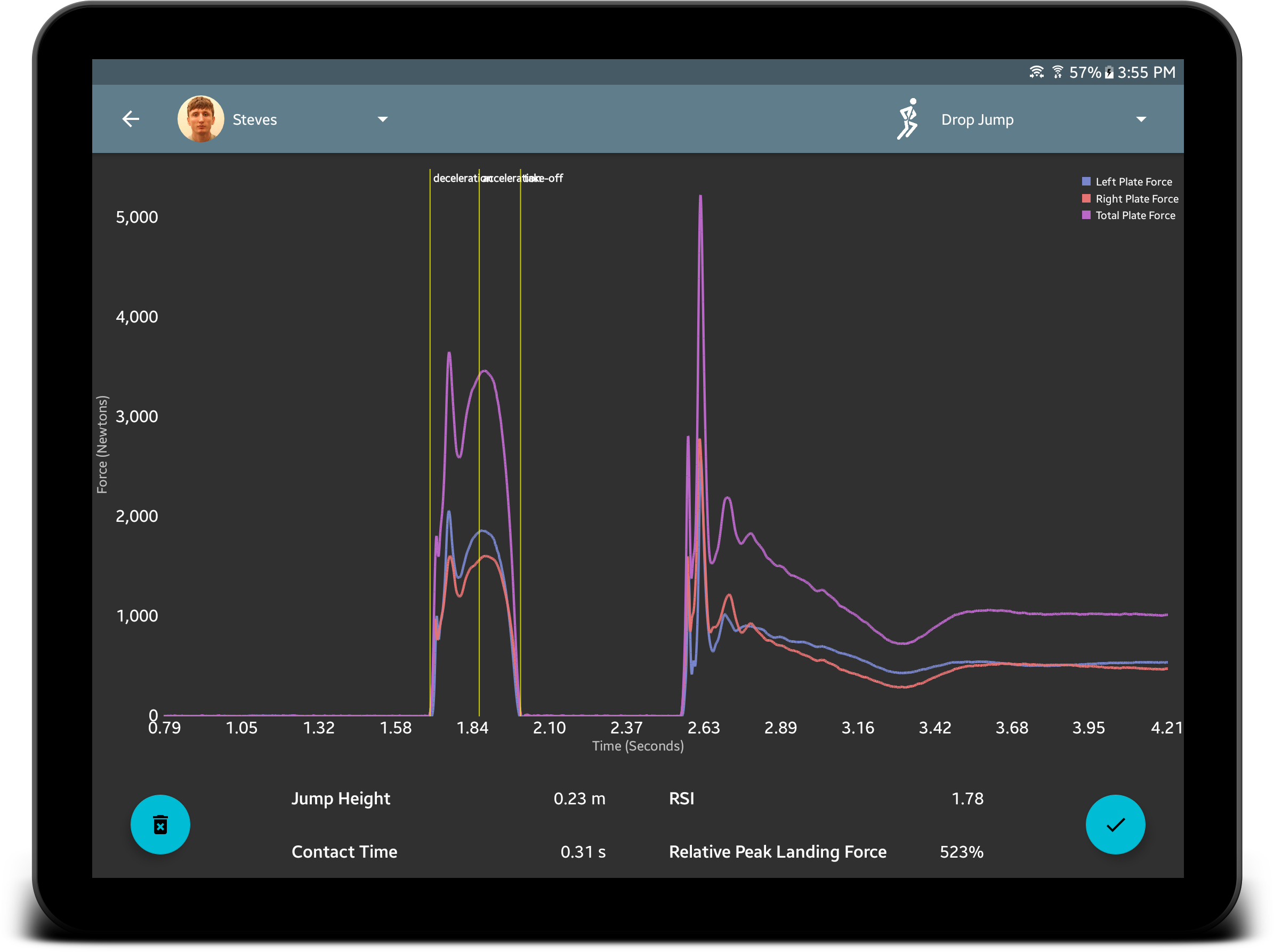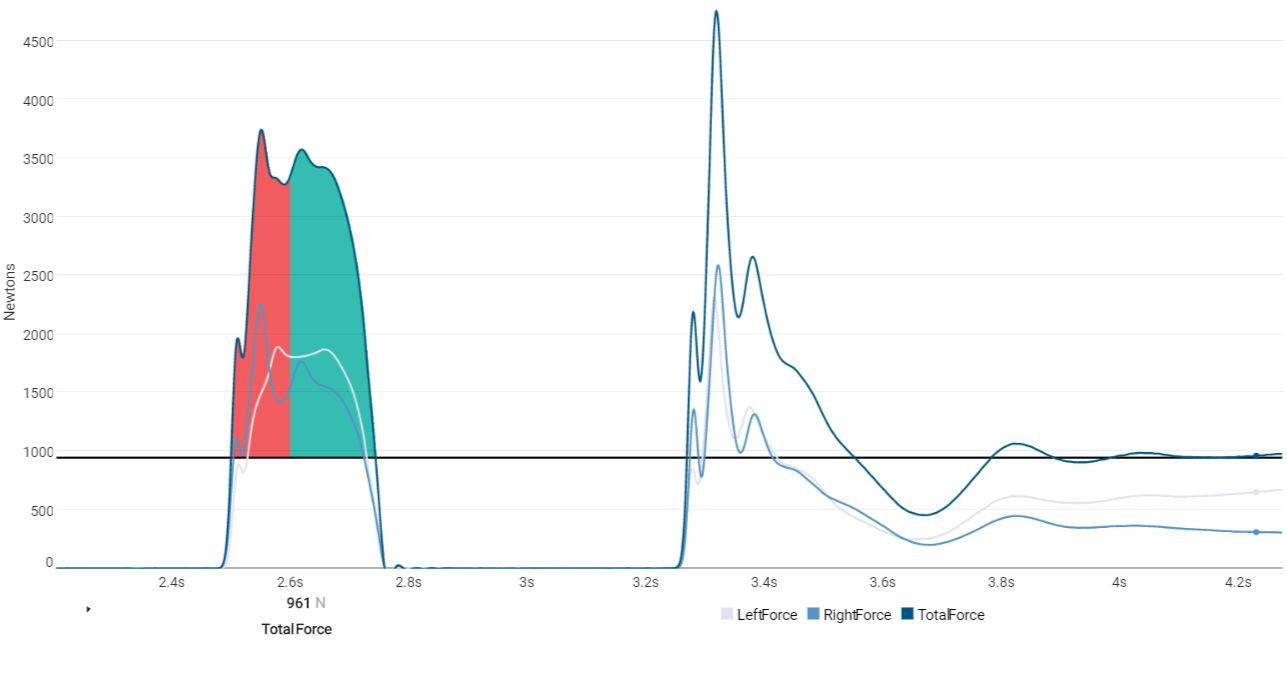The Drop Jump Test is designed to examine athlete reactivity. The Drop Jump (DJ) test consists of an athlete standing on a platform behind the force plate(s), stepping off and dropping onto the plates, absorbing the drop, and immediately propelling back up into a jump. The Drop Jump (DJ) is considered a fast stretch-shortening movement—when an athlete lands on the platform his eccentric loading phase is accelerated by means of the added force of the drop, and one of the main measures of the test is how quickly the athlete can move from absorption to propulsion.

Two of the most valuable metrics outputted from the DJ test are the Reactive Strength Index (RSI) and Drop Jump Height.
Test Protocol
The Drop Jump test protocol has a slightly different protocol compared to other test types.
-
Athlete should stand on an elevated platform set directly behind the plates.
-
On cue, the athlete should step off the elevated platform onto the plates, and in one motion absorb the landing from the drop and transition directly into a jump.
-
The athlete should stick the landing from the jump and hold still until the test completes.
Tips for Best Results
-
Depending on which software is used to conduct a DJ test, you will likely need to input the drop height for accurate calculations to be completed.
-
Measure from the elevated platform to the top of the force plates—not to the ground (unless your plates are embedded in the floor)
-
Ensure that the athlete stands still at the end of the jump, as often this is when system weight is calculated (dependent on software/system)
-
Hand Placement
-
Keep hands placed on hips throughout the test and all subsequent tests for consistency.
Phases of the Drop Jump

-
Drop Phase
-
The Drop phase occurs after the athlete has received the test cue and drops onto the plates
-
This phase lasts from when the test starts until the athlete contacts the plates
-
Braking Phase
-
The braking phase begins almost instantaneously after the athlete lands on the plate after the initial drop. Some like to refer to this phase as the "deceleration" phase as well. During deceleration/braking, the athlete stretches the leg muscles (eccentric) to prepare for the next phase (concentric)
-
Propulsive phase
-
The propulsive phase begins when the athlete’s velocity reaches 0 and continues until the athlete leaves the plates. Some also refer to the propulsive phase as the acceleration phase
-
Flight Phase
-
The flight phase starts as the athlete leaves the plates and lasts as long as the athlete is airborne
-
Landing Phase
-
The landing phase, as indicated by its name, begins when the athlete lands back on the plate after the jump
Citations:
-
Flanagan, Eamonn P PhD, CSCS; Comyns, Thomas M PhD. The Use of Contact Time and the Reactive Strength Index to Optimize Fast Stretch-Shortening Cycle Training. Strength & Conditioning Journal: October 2008 - Volume 30 - Issue 5 - p 32-38
-2.png?width=156&height=60&name=Hawkin%20Logo%20(2)-2.png)
-1.png?width=155&height=60&name=WHITE.Horizontal_Logo.Transparent%20(3)-1.png)

